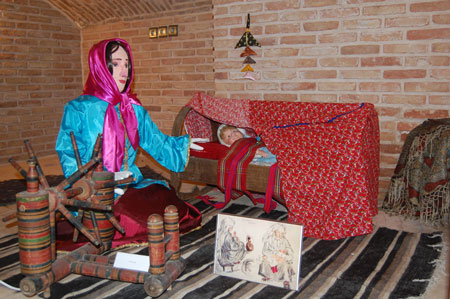
Cultural History of Childhood, Childhood Culture
Childhood Museum, Ten Days with Ghazvin Province in Iran
Regarding children from different aspects is one of the signs of the economic, social and cultural development in every country. There is no so-called culturally-developed society which doesn’t provide the children and their families with welfare and living standards and advanced educational system.
Play and Living environment, special healthcare, numerous children’s libraries, schools and workshops with comfortable and standard environment, and child-centered educational methods are the indicatives of a developed country. Considering the cultural heritage and history of a nation is one of the signs of the cultural development of the society.
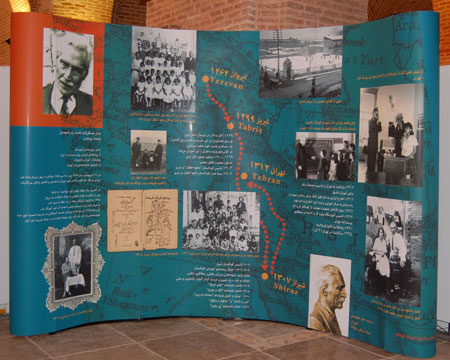
Different children’s museums such as children’s literature museum, toy museum, Children's Clothes Museum are the vestige of former culture of the society and future development. Nowadays, in the educational system of the developed countries, the museum-centered education is one of the vital learning methods. The museum-centered education is based on the cooperative and interactive learning of children in the museums. In this method, the children approach and touch some model documents and objects with museum docent. In these kinds of museums two possible teaching methods are existed. In some parts it is written Please, Touch it! In other parts it is written Look! But Don’t Touch. Both of them are the methods of education. In some cases children visit the original model and are not allowed to touch as far as the documents and objects are the symbol of human memory in the history and destruction of it signifies the elimination of part of the human memory. In other cases, some model documents and objects are touchable and children could visit them closely and interact with the items in the museum. The museum docent has a decisive role in museum-centered education when children touch or watch the items as he / she has a thorough acquaintance with history and culture.
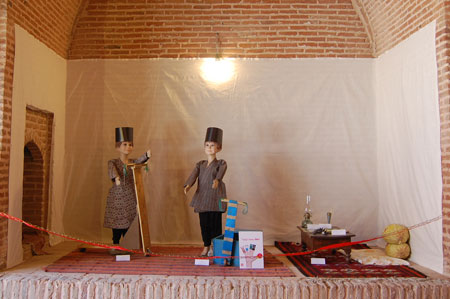
Fortunately, considering the cultural institutions and organizations such as children libraries in Iran has been highly grown. Establishing the National Museum of Childhood Culture which consists of children’s literature, health, clothes, toys and games is one of the objectives of the Institute for Research on the History of Children’s Literature in Iran (IRHCLI) in the previous decade.
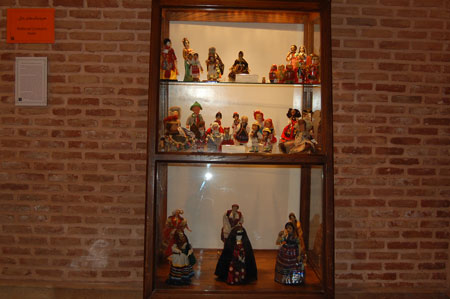
For this reason, On the occasion of Ghazvin Week, the Institute for Research on the History of Children’s Literature in Iran (IRHCLI) with the cooperation of Qazvin Municipality Sport-Cultural Organization held the Childhood Culture Museum-Exhibition in the 3rd Toys & Games Festival in Iran at the House of Sa'd al-Saltanah in Ghazvin from 4th to 13th of September 2013.
31th of August has named Ghazvin Day after the declaration of Shah Tahmasp, The Safavid King, who named Ghazvin a capital. On the occasion of this event, a week has designated for Ghazvin province.
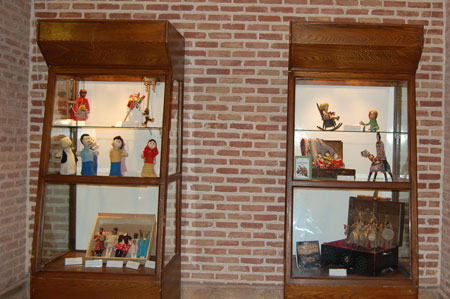
The IRHCLI, in its second presence at the Festival, has attempted to offer other parts of the artistic and literary treasures of thousands historical years of Iran. Last year, the visitors were able to become familiar with the research achievements of the institute. This year, they could enjoy the new situation and use the well-founded information along with the new visitors. Parts of the Exhibition-Museum have been designed cooperatively to help the children and YA to familiarize with the conventions of museums and the spiritual heritage of the life of Iranian child. In some parts of the museum, the children were permitted to touch the reparable items and have active participation in the well-known story, the uninvited, and taste the art and culture of the childhood.

The 3rd Ghazvin Toys & Games Festival was an international event and hosted some foreign guests for several hours. Munir Safi Addin, the Unicef representative in Iran, the ambassadors of Czech Republic, Bolivia, Venezuela, Somali, Serbia, New Guinea, Egyptian Interest Section, Zimbabwa attaché, some storytellers from Canada, Azerbaijan, India, Iraq, Pakistan, Germany, Bosnia were among the guests. All the guests were fascinated by the historical background of Iranian Children’s Literature, Games, Toys and research works in children’s lives of ancient Iran.

According to the statistics of Sport & Cultural Organization of Ghazvin Municipal 130000 were the domestic visitors including 40 international executives and special guests, 80 media experts, 15 cinematic artists and 25 photographers. There was no sign of the promoters, advocates and researchers in the field of Children’s Literature.
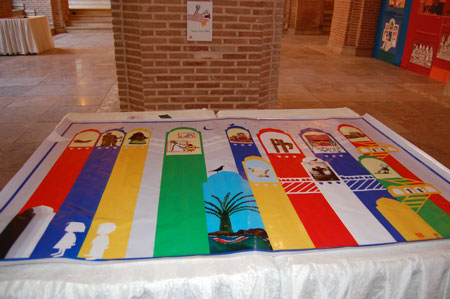
The most feedback was among the Ghazvin visitors and its suburbs. An old Yazdi woman reminded of the hammock, cradle, and hand-made toys from her far past days. She promised to make a straw doll for the museum she was playing in her childhood. Most of the visitors were eager to bring their childhood hand-made toys to the museum. Moreover, the labor and street children were among the visitors who were coming with the Association for the Protection of Children. Their presence was repeated in few days later. These visitors showed up in next days with their friends and tried to explain the objects of the museum to their friends. The scene of the uninvited story and the “Reading with me” project were the sections most of them were interested in and had special appeal to listen into. Where the storyteller told a story, was the only place they kept silence, even the most mischievous and playful ones.
The magic spell of the story was seen in their behavior. The Eidi-sazi1 and the map of the history of the childhood culture were the sections these children visited several times in different days of the exhibition. The Festival officials and some interested citizens were informed of childhood museum effect and were asked to cooperate with the Association for the Protection of Children to implement a planned program for these target children.
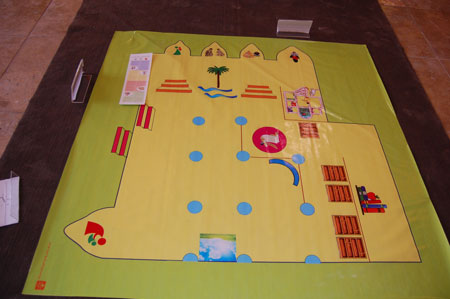
This exhibition was a small prototype of a dream could be fulfilled by the institute and the museum will be established via interactive and cooperative way and touchable items which would be one of the grounds of the museum.
The IRHCLI hopes to have its part in raising the cultural knowledge and bring a real gaiety among children and young adults.
1Iran's first printing and publishing pictures for students in the school, the stamp was printed on paper made by hand wooden frames and were gift given to children at the New Year.
Bahar Eshraq
